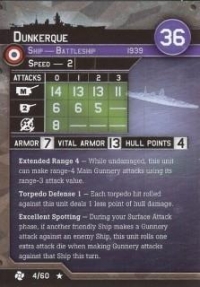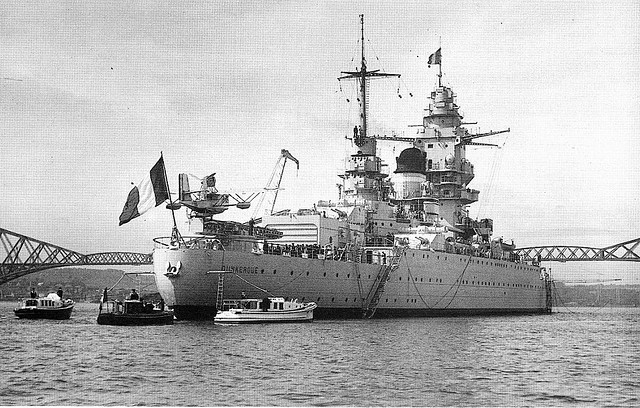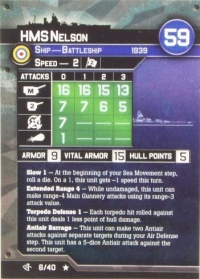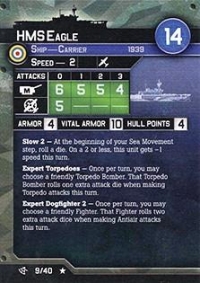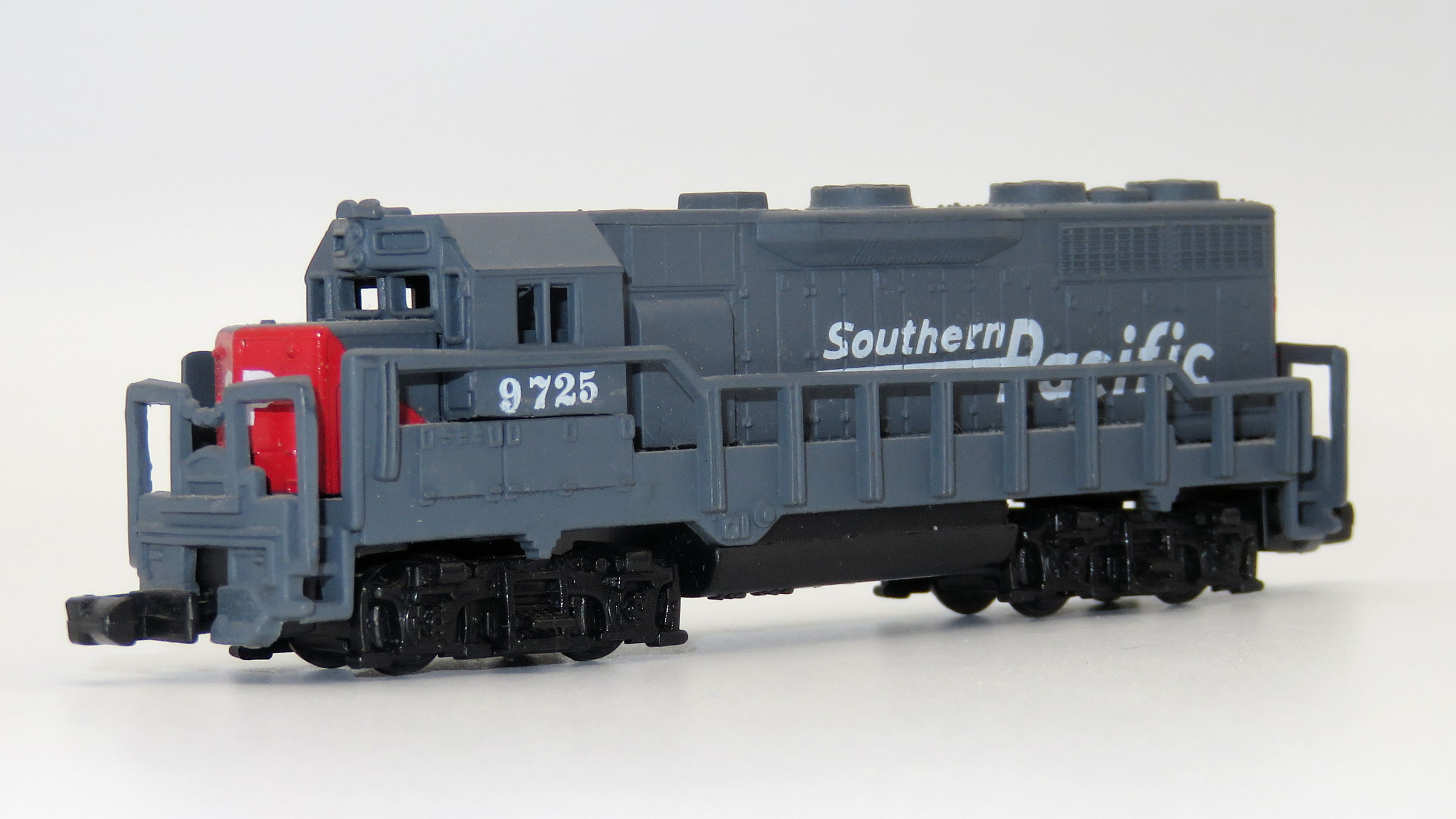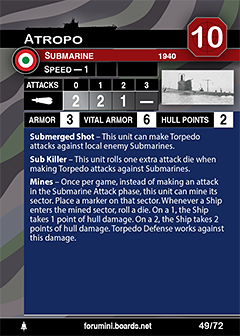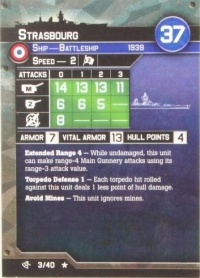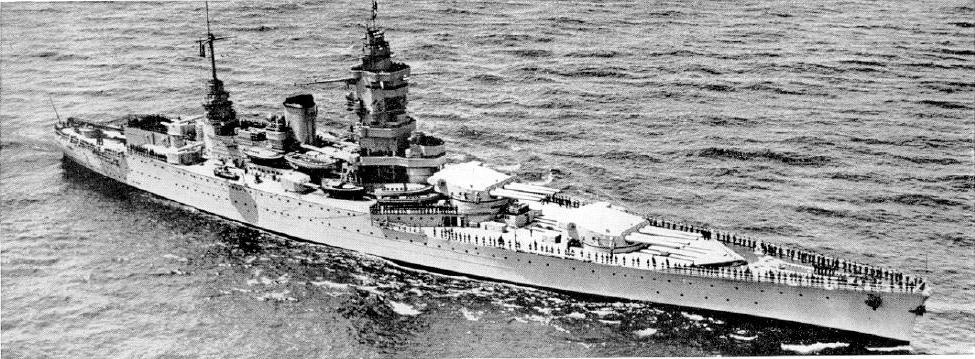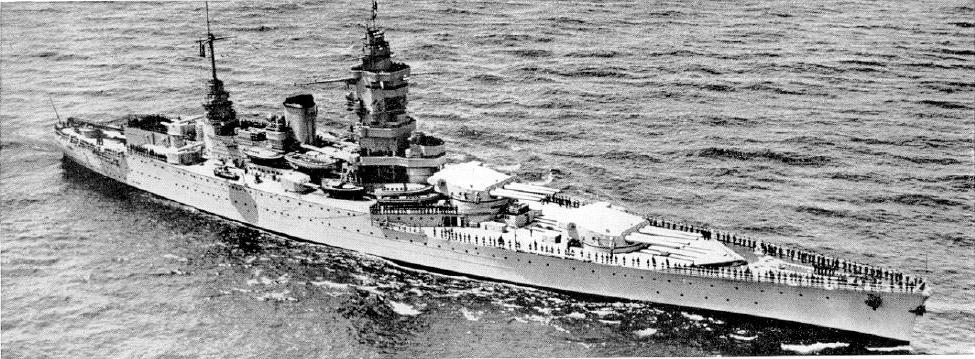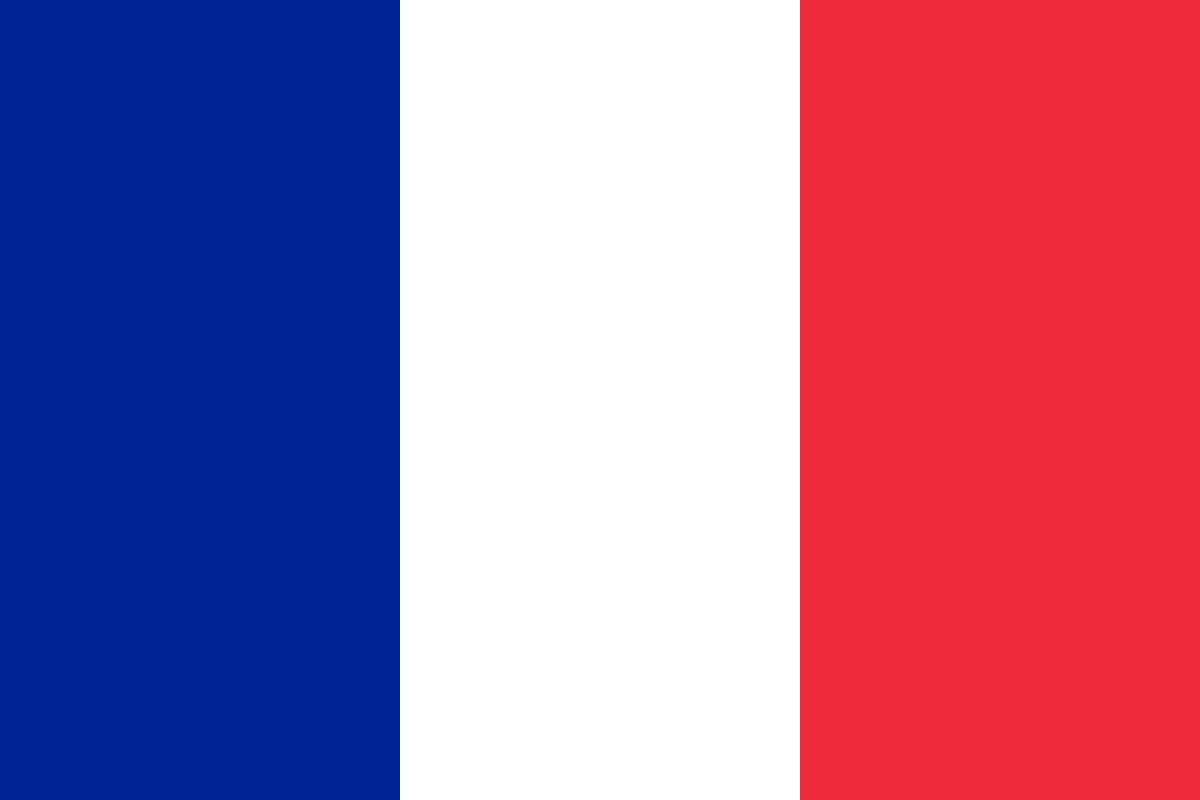Prototype: Dunkerque was the lead ship of the Dunkerque class of battleships built for the French Navy in the 1930s. The class also included Strasbourg. The two ships were the first capital ships to be built by the French Navy after World War I; the planned Normandie and Lyon classes had been cancelled at the outbreak of war, and budgetary problems prevented the French from building new battleships in the decade after the war. Dunkerque was laid down in December 1932, was launched October 1935, and was completed in May 1937. She was armed with a main battery of eight 330mm/50 Modèle 1931 guns arranged in two quadruple gun turrets and had a top speed of 29.5 knots (54.6 km/h; 33.9 mph).
Dunkerque and Strasbourg formed the French Navy's 1ère Division de Ligne (1st Division of the Line) prior to the Second World War. The two ships searched for German commerce raiders in the early months of the war, and Dunkerque also participated in convoy escort duties. The ship was badly damaged during the British attack at Mers-el-Kébir after the Armistice that ended the first phase of France's participation in World War II, but she was refloated and partially repaired to return to Toulon for comprehensive repairs. Dunkerque was scuttled in November 1942 to prevent her capture by the Germans, and subsequently seized and partially scrapped by the Italians and later the Germans. Her wreck remained in Toulon until she was stricken in 1955, and scrapped three years later.
Dunkerque and Strasbourg formed the French Navy's 1ère Division de Ligne (1st Division of the Line) prior to the Second World War. The two ships searched for German commerce raiders in the early months of the war, and Dunkerque also participated in convoy escort duties. The ship was badly damaged during the British attack at Mers-el-Kébir after the Armistice that ended the first phase of France's participation in World War II, but she was refloated and partially repaired to return to Toulon for comprehensive repairs. Dunkerque was scuttled in November 1942 to prevent her capture by the Germans, and subsequently seized and partially scrapped by the Italians and later the Germans. Her wreck remained in Toulon until she was stricken in 1955, and scrapped three years later.
Class History: The Dunkerque-class battleship was a type of warship constructed for the French Navy in the 1930s.
The Dunkerques were designed to counter the German Deutschland-class pocket battleships. Their main armament was two quadruple 330 mm turrets forward, with a 225 mm (8.9 in) thick armored belt. They were smaller, with a 26,500- to 27,300-ton standard displacement and a smaller main artillery caliber, than the battleships authorized by the Washington Naval Treaty, but their speed was 7 knots higher than any of the battleships built from 1920 to 1937. When they were commissioned, only the last existing battlecruisers of the British Royal Navy and the Imperial Japanese Navy were their equals.
Given their characteristics, they were alternatively classified as fast battleships, small battleships, battlecruisers, and even as "ships of the line" (Fr. navires de ligne).
Two ships, Dunkerque and Strasbourg, were completed. Together they formed the 1re Division de Ligne ("1st Division of the Line"), and saw service during the early years of the Second World War. While they never encountered the German pocket battleships they were designed to counter, they suffered the British attack of Mers-el-Kebir, and stayed under the Vichy authorities control until they were scuttled at Toulon in November 1942.
The Dunkerques were designed to counter the German Deutschland-class pocket battleships. Their main armament was two quadruple 330 mm turrets forward, with a 225 mm (8.9 in) thick armored belt. They were smaller, with a 26,500- to 27,300-ton standard displacement and a smaller main artillery caliber, than the battleships authorized by the Washington Naval Treaty, but their speed was 7 knots higher than any of the battleships built from 1920 to 1937. When they were commissioned, only the last existing battlecruisers of the British Royal Navy and the Imperial Japanese Navy were their equals.
Given their characteristics, they were alternatively classified as fast battleships, small battleships, battlecruisers, and even as "ships of the line" (Fr. navires de ligne).
Two ships, Dunkerque and Strasbourg, were completed. Together they formed the 1re Division de Ligne ("1st Division of the Line"), and saw service during the early years of the Second World War. While they never encountered the German pocket battleships they were designed to counter, they suffered the British attack of Mers-el-Kebir, and stayed under the Vichy authorities control until they were scuttled at Toulon in November 1942.
Country: France is one of Europe’s largest countries. It is bordered by six countries other nations: Germany, Belgium and Luxembourg to the northeast, Switzerland and Italy to the southeast and Spain to the southwest. The United Kingdom borders France via the English Channel. The country is considered to be the gateway to Europe as there are several large international airports (two of these can be found in Paris), ferry terminals and the French rail service.
In 486, Frankish tribes unified under Merovingian kingship. In 843, Western Francia was established from the division of the Carolingian Empire. In 1789, the French monarchy was overthrown, and in 1792, the First French Republic was founded. In 1958, the Fifth French Republic was established.
In 486, Frankish tribes unified under Merovingian kingship. In 843, Western Francia was established from the division of the Carolingian Empire. In 1789, the French monarchy was overthrown, and in 1792, the First French Republic was founded. In 1958, the Fifth French Republic was established.
Item created by: Lethe on 2015-05-31 17:46:30. Last edited by gdm on 2019-04-17 21:08:03
If you see errors or missing data in this entry, please feel free to log in and edit it. Anyone with a Gmail account can log in instantly.
If you see errors or missing data in this entry, please feel free to log in and edit it. Anyone with a Gmail account can log in instantly.


